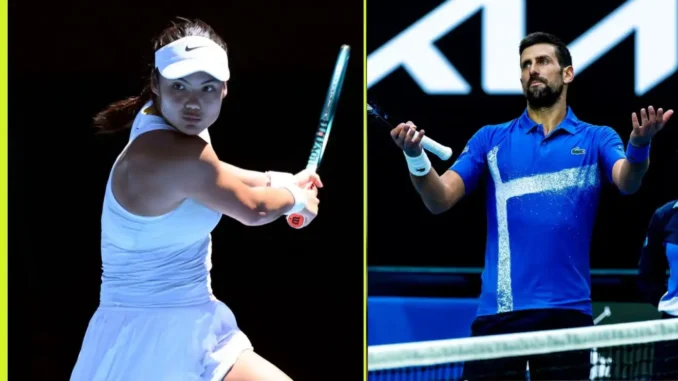
In the sweltering haze of Shanghai and Wuhan, where humidity suffocates and ambition collides with the Yangtze’s mist, the 2025 Asian tennis swing has become a grueling test of survival rather than a stage for blistering serves. With temperatures soaring past 30°C (86°F) and humidity pushing the heat index to a punishing 40°C (104°F), top players are buckling under relentless conditions. The Shanghai Rolex Masters and Wuhan Open, cornerstones of the ATP and WTA circuits, are unraveling amid medical emergencies, retirements, and desperate calls for change. Novak Djokovic, the 24-time Grand Slam legend, collapsed after vomiting repeatedly on court, while Emma Raducanu, the young British star, succumbed to dizziness and defeat. This isn’t just tough tennis—it’s a crisis exposing the sport’s global ambitions at the cost of player safety.
The drama unfolded across two cities, 500 miles apart, united by a brutal foe: the weather. In Shanghai, the ATP Masters 1000 event at the lotus-shaped Qizhong Forest Sports City began under clear skies that soon betrayed their cruelty. During his third-round match against Yannick Hanfmann, Djokovic, 38, secured a 6-2, 6-3 win but was left heaving, vomiting between points under crippling humidity. “It’s brutal for everyone,” he said, his exhaustion palpable. The next day, facing Jaume Munar, the ordeal worsened. Nursing an ankle injury, Djokovic battled through a 6-3, 6-2 victory, only to collapse post-match, needing medical attention for heat stress. “Physically, it’s a huge challenge,” he admitted, hinting at the toll on his aging frame as he prepares to face Zizou Bergs in the quarterfinals.
Shanghai’s misery spread through the draw. Alexander Zverev poured sweat from his shoes, a grim spectacle for the 15,000 fans. Taylor Fritz and Giovanni Mpetshi Perricard shuffled through their match, drained by dehydration. Even Jannik Sinner, the world No. 2, retired mid-match with cramps, while Holger Rune raged at officials: “Do you want a player to die out here?” His outburst, slamming the ATP’s lack of a clear heat policy—unlike the WTA’s, which enforces breaks at high wet-bulb temperatures—sparked widespread debate. The ATP’s vague promise to “review policies” feels hollow as forecasts predict 33°C (91°F) for the final, threatening a punishing climax.
In Wuhan, the WTA 1000 event at Optics Valley was no less brutal, despite partial roof cover and heat-rule pauses. Emma Raducanu, the 22-year-old US Open champion, started strong against Ann Li but faded fast in the oppressive heat. Trailing 6-1, 4-1, she slumped in her chair, pale and gasping, before retiring after a medical timeout. “It’s the worst feeling, giving up,” she said, questioning her participation in the upcoming Ningbo WTA 500. Jelena Ostapenko collapsed with heatstroke, needing oxygen before withdrawing, while top seeds Aryna Sabalenka and Iga Świątek voiced frustration over the “searing” conditions.
This crisis reflects tennis’s global push into hotter climates for prestige and profit, often ignoring player welfare. Climate change, driven by emissions, is making these heatwaves more frequent, turning courts into cauldrons. Players like Djokovic and Rune demand universal heat protocols—indoor play, AI-tracked conditions, and mandatory pauses. “Biologically, it’s unsustainable,” Djokovic warned. For rising stars like Raducanu, it’s a harsh lesson in the tour’s physical toll. As the Asian swing heads to Hong Kong, the sport faces a reckoning: adapt to the heat or risk more breakdowns.
Ultimately, these tournaments, meant to showcase skill, have laid bare tennis’s human limits. Djokovic presses on in Shanghai; Raducanu weighs her next move. But as China’s courts bake under an unrelenting sun, the real battle isn’t for titles—it’s for survival in a sport where the elements are winning.
Leave a Reply